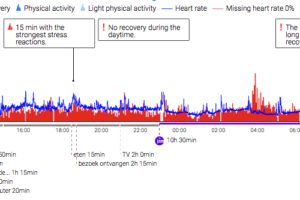Infertility and subfertility is a problem that affects a large part of the population, according to the WHO. It is estimated that more than 10% of women who have lived in a stable relationship for at least 5 years are undesirably childless. The impact of unwanted childlessness is large and, according to the WHO, is underestimated. The past 20 years have not shown a decrease in this problem.
Structural Impediments?
When structural impediments, such as congested fallopian tubes or poor sperm quality, are excluded, the diagnostic options are regularly exhausted. As a rule, only treatments such as IUI, IVF or ICSI are still open. But there is a group of couples who prefer to study the possibilities through natural means first. In our opinion, a system diagnostic approach is also essential. Let us illustrate it with a few examples:
When a woman has a disturbance of the autonomic nervous system (ANS) this can be a dominance of the sympathetic function. This is the part of the ANS that manages everything that has to do with stress, activity and “survival”. The body will then slow down the reproductive functions. After all, “survival” means “pre-planting.”. The net result is unwanted childlessness.
The 72 hours HRV Lifestyle Assessment provides clarity here quickly. If a woman has a too low morning temperature, this is despite an expected normal TSH blood value (one of the thyroid values) an indication for a decreased thyroid metabolism. A too high Calcium / Potassium ratio in the Hair Minerals analysis, (the ‘thyroid ratio’), is important information in this regard.
We support and guide couples who want to optimize the possibility of becoming pregnant by natural means. In the coming newsletters we will report about concrete case studies.






